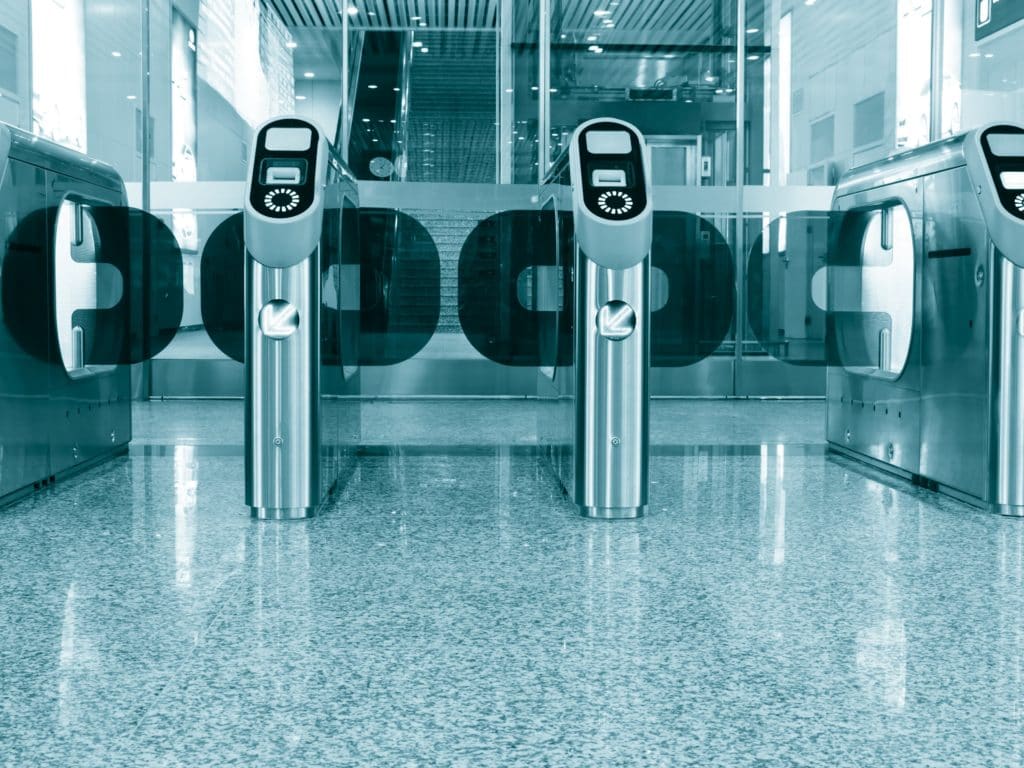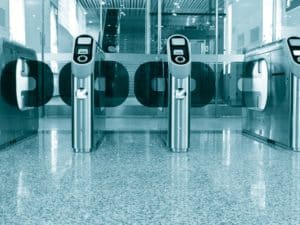What is electronic access control? To answer this, first consider that access control is the ability to permit or deny the entry to a resource. Mechanisms can be used in managing physical resources such as a cinema, to which only ticket holders should be admitted; logical resources like a bank account, with a limited number of people authorised to make a withdrawal or digital resources, for example, a private text document on a computer, which only certain users should also be able to read.
When considering accessing physical resources you may have a person who will control entry, but in reality, you are likely to have an electronic process to assist, such as scanning the barcodes on tickets. Increasingly organisations are able to automate the process entirely with an electronic access control system.
To implement this, organisations requirements require an access control point, which can be a door, turnstile, parking gate, elevator, or other physical barrier where granting access can be electrically controlled.
What is included in an electronic access control system?
An electronic access control door can contain several elements. At its most basic there is a stand-alone electronic lock. In larger applications involving more than one door, electric strikes or magnetic locks are used. The lock is unlocked by an operator with a switch.
To automate this, operator intervention is replaced by a reader. The reader could be a keypad where a code is entered, it could be a card reader, or it could be a biometric reader. Readers do not usually make an access decision but send a card number to an access control panel that verifies the number against an access list.
To monitor the door position a magnetic door switch is used. In concept the door switch is not unlike those on refrigerators or car doors. Generally only entry is controlled and exit is uncontrolled. In cases where exit is also controlled a second reader is used on the opposite side of the door. In cases where exit is not controlled, free exit, a device called a request-to-exit (REX) is used. Request-to-exit devices can be a push button or a motion detector.
When the button is pushed or the motion detector detects motion at the door, the door alarm is temporarily ignored while the door is opened. Exiting a door without having to electrically unlock the door is called mechanical free egress. This is an important safety feature. In cases where the lock must be electrically unlocked on the exit, the request-to-exit device also unlocks the door.
What are the benefits of electronic access control?
Electronic access control provides a mechanism to control the management of people on your site; the number of staff or visitors on your site or to seal off areas within your property. The key benefits are:
- You can improve access both to staff and visitors but at a manageable cost
- When staff leave it is easy to remove their access and add new staff and you do not have to keep track of multiple sets of keys
- You can manage occupancy levels easily – helping you deal with emergencies more quickly
- If it is a site that is not always staffed then it is easy to control access remotely or via a schedule
- You can monitor real time activity, on, and remotely off, site
- You can create staff time keeping logs
- The system will create emergency evacuation call list logs
- Areas within a building can be separately secured improving security systems
- Door Locks are managed either centrally or via stand-alone solutions
What are the recent developments in electronic access control?
The improvements in technology, particularly in cloud computing, and the widespread use of smart phones and tablets mean touchless access and accreditation are now available. Touchless access control is a form of building entry point management that does not require the user to physically touch the reader or door handle to gain access. A touchless door handle or touchless door knob can be integrated to work with different types of credentials, including proximity cards, biometric indicators and apps on smart phones, with none of these methods requiring physical touch to unlock doors.
Providing accreditations and passes via smart phones, as long as this is backed up with good cybersecurity, means there is less concern about people losing keys, fobs or cards. This can help if you employ temporary staff or need to provide access quickly, for example to allow members to enter a gym. Meanwhile being able to remotely allow access, for example to delivery drivers, means staff time is spent more efficiently.
Additionally, the advantages of cloud technology mean the access control systems are more scalable than ever. This is perfect for any organisation that is starting small but grows over time so that access control never becomes overwhelming to the organisation. It is easier than ever to manage access across multiple sites, which includes the ability to develop world-wide systems.
How we can help
Electronic access control systems are developing quickly. We have been installing these systems for over a decade and ensure we keep up with the changes in technology. If you want to know more about electronic access control, and how it could help you, please get in touch.



